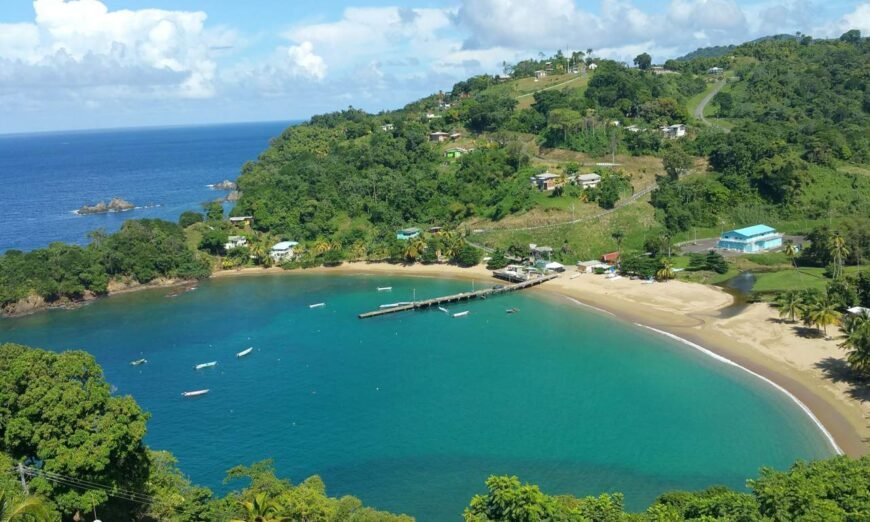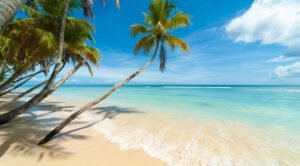 The tiny twin island Republic of Trinidad and Tobago offers an enticing mix of cultural activities and eco-adventure. Located just off the tip of Venezuela, lively Trinidad, the larger of the two, boasts energetic nightlife in its modern capital, Port-of-Spain. Driving on the North Coast Road reveals lush forest and breathtaking views. Tobago, two hours away by fast ferry, is comparatively serene. Azure seas contrast with pale pink sands and golden sunsets. Protected rainforest and stunning coral reefs complete this paradise. These two islands are contrastingly different. Tobago has white sandy beaches and palm trees and remains relatively un-touristed while Trinidad is covered with rainforests and untouched mangrove swamps that are popular with bird watchers.
The tiny twin island Republic of Trinidad and Tobago offers an enticing mix of cultural activities and eco-adventure. Located just off the tip of Venezuela, lively Trinidad, the larger of the two, boasts energetic nightlife in its modern capital, Port-of-Spain. Driving on the North Coast Road reveals lush forest and breathtaking views. Tobago, two hours away by fast ferry, is comparatively serene. Azure seas contrast with pale pink sands and golden sunsets. Protected rainforest and stunning coral reefs complete this paradise. These two islands are contrastingly different. Tobago has white sandy beaches and palm trees and remains relatively un-touristed while Trinidad is covered with rainforests and untouched mangrove swamps that are popular with bird watchers.
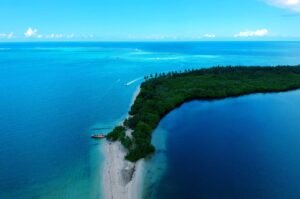 Asa Wright Nature Centre, a former cocoa and coffee plantation transformed into a 600-hectare nature reserve. Located amid the rainforest of the Northern Range, the center has a lodge catering to birding tour groups and a series of hiking trails, open today visitors via guided tours. Bird species commonly seen here include tanagers, honeycreepers, oropendolas, motmots, channel-billed toucans, 14 species of hummingbird and numerous raptors.
Asa Wright Nature Centre, a former cocoa and coffee plantation transformed into a 600-hectare nature reserve. Located amid the rainforest of the Northern Range, the center has a lodge catering to birding tour groups and a series of hiking trails, open today visitors via guided tours. Bird species commonly seen here include tanagers, honeycreepers, oropendolas, motmots, channel-billed toucans, 14 species of hummingbird and numerous raptors.
Mount St Benedict Monastery- built in 1912, this monastery is one of the oldest in the Caribbean and is situated in a garden of 593 acres, which provides places to hike, bird-watch and take in the views over Trinidad. Portof- Spain – visit the vibrant town with its partially restored colonial buildings, market stalls and bustling bars, clubs and restaurants.
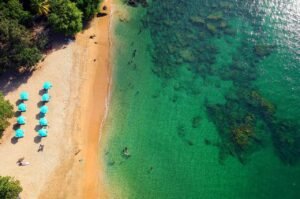 Port of Spain is a mishmash of the pretty and the gritty, with the green expanse of uptown Queen’s Park Savannah and a host of gorgeous fretworked buildings alongside a frenetic, gridlocked downtown area, its waterfront mostly hidden behind grimy industrial sprawl. But the city’s explosive development has created a savvy, metropolitan verve that sets it apart from the average Caribbean capital.
Port of Spain is a mishmash of the pretty and the gritty, with the green expanse of uptown Queen’s Park Savannah and a host of gorgeous fretworked buildings alongside a frenetic, gridlocked downtown area, its waterfront mostly hidden behind grimy industrial sprawl. But the city’s explosive development has created a savvy, metropolitan verve that sets it apart from the average Caribbean capital.
A trip to Tobago isn’t complete without visiting some of the most majestic sights on the island. With approximately 26 rivers converging from the Main Ridge Rainforest, this gave birth to more than 14 known waterfalls across the island such as Castara Waterfall, Highland Waterfall, Craig Hall Waterfall and Green Hill Waterfall among others.
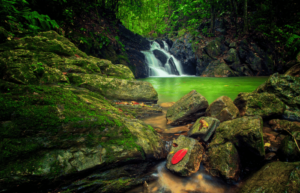 Little Tobago – take a boat from Tobago to the uninhabited island of Little Tobago and walk through the forest, looking out for the birdlife. Afterwards, stop for a bit of snorkeling around the reef. Corbin Local Wildlife Park was established by hunter turned conservationist Roy Corbin in Tobago’s forest-covered interior, just inland of the windward coast’s Hope Bay, this non-profit sanctuary is home to most of the island’s indigenous animals. Guided walks (usually led by Corbin himself) offer a fascinating insight into Tobago’s wildlife and forests, and are also great for bird watching.
Little Tobago – take a boat from Tobago to the uninhabited island of Little Tobago and walk through the forest, looking out for the birdlife. Afterwards, stop for a bit of snorkeling around the reef. Corbin Local Wildlife Park was established by hunter turned conservationist Roy Corbin in Tobago’s forest-covered interior, just inland of the windward coast’s Hope Bay, this non-profit sanctuary is home to most of the island’s indigenous animals. Guided walks (usually led by Corbin himself) offer a fascinating insight into Tobago’s wildlife and forests, and are also great for bird watching.
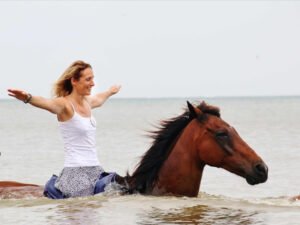 Fort George was built in 1804, this fort provides insight into the colonial past of the island, and its most remarkable feature is the signal station, built in 1833. There’s a wooden signal station with a diorama of the fort and a board detailing its construction by Ashanti prince Kofi Nte in 1883. Benches and picnic tables dot the manicured lawns and there are telescopes to zoom in on the panorama below.
Fort George was built in 1804, this fort provides insight into the colonial past of the island, and its most remarkable feature is the signal station, built in 1833. There’s a wooden signal station with a diorama of the fort and a board detailing its construction by Ashanti prince Kofi Nte in 1883. Benches and picnic tables dot the manicured lawns and there are telescopes to zoom in on the panorama below.
 Maracas Bay is north-east of Port-of-Spain and provides a protected stretch of sandy, palm-lined beaches to relax in the sun. There is a beautiful drive through the rainforest to reach the beach.
Maracas Bay is north-east of Port-of-Spain and provides a protected stretch of sandy, palm-lined beaches to relax in the sun. There is a beautiful drive through the rainforest to reach the beach.
Queen’s Park Savannah, was once part of a sugar plantation, formerly home to a racecourse and now the epicenter of the annual Carnival, this public park is encircled by a 3.7 km perimeter road that locals call the world’s largest roundabout. In the early evening when the scorching heat subsides, the grassy center is taken up with games of cricket or football, while joggers crowd the perimeter path and vendors sell cold coconut water.
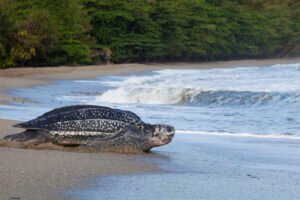 Trinidad and Tobago Carnival – the greatest street parade in the world – originated during the period of slavery. Like other Roman Catholic countries involved in Carnival, these celebrations take place on the Monday and Tuesday directly before Ash Wednesday, usually marked in February or March. Activities on the two days take the form of street parades by bands of costumed masqueraders. The epicenter for the twoday Parade of the Bands in Trinidad and Tobago is Port of Spain however, similar street parties are held at the sister capital San Fernando and at community level in Mayaro, Chaguanas, Arima and Tobago. There are many cultural shows and parties (fetes) which take place weeks before the actual street parades on Carnival Monday and Tuesday.
Trinidad and Tobago Carnival – the greatest street parade in the world – originated during the period of slavery. Like other Roman Catholic countries involved in Carnival, these celebrations take place on the Monday and Tuesday directly before Ash Wednesday, usually marked in February or March. Activities on the two days take the form of street parades by bands of costumed masqueraders. The epicenter for the twoday Parade of the Bands in Trinidad and Tobago is Port of Spain however, similar street parties are held at the sister capital San Fernando and at community level in Mayaro, Chaguanas, Arima and Tobago. There are many cultural shows and parties (fetes) which take place weeks before the actual street parades on Carnival Monday and Tuesday.
Pitch Lake is about 25km southwest of San Fernando, and just south of the small town of La Brea, this slowly bubbling black ‘lake’ is perhaps Trinidad’s greatest oddity. Once thought of by the Amerindians as a punishment of the gods, the 40-hectare expanse of asphalt is around 75m deep at its center, where hot bitumen is continuously replenished from a subterranean fault. One of only three asphalt lakes in the world, it has the single-largest supply of natural bitumen. This natural phenomenon is not only a national treasure but a gift to the world.
 National Museum & Art Gallery is housed in a classic colonial building, the rather dry historical exhibits range from the oil industry to Amerindian settlers, the colonial era and indentured Indians. There are also geological and natural-history displays. The rotating collection of artwork on the top floor is the highlight, and gives an excellent introduction to the Trinbago art scene. And don’t miss the
National Museum & Art Gallery is housed in a classic colonial building, the rather dry historical exhibits range from the oil industry to Amerindian settlers, the colonial era and indentured Indians. There are also geological and natural-history displays. The rotating collection of artwork on the top floor is the highlight, and gives an excellent introduction to the Trinbago art scene. And don’t miss the
classic T&T films screened on a loop in the audio-visual room.
Although temperatures tend to be fairly consistent the whole year, the weather is dry from December to May and the rainy season occurs between June and November. The dry season is considered the high season for tourism.
The majority of international flights land at Piarco International Airport in Trinidad, while others land at ANR Robinson International Airport in Tobago. A number of airlines service the airports, including Caribbean Airlines, LIAT, American Airlines, United and budget airline JetBlue. Trinidad and Tobago is on the itinerary of various cruise liners, such as Princess Cruises and Carnival, which make stops at both islands.

